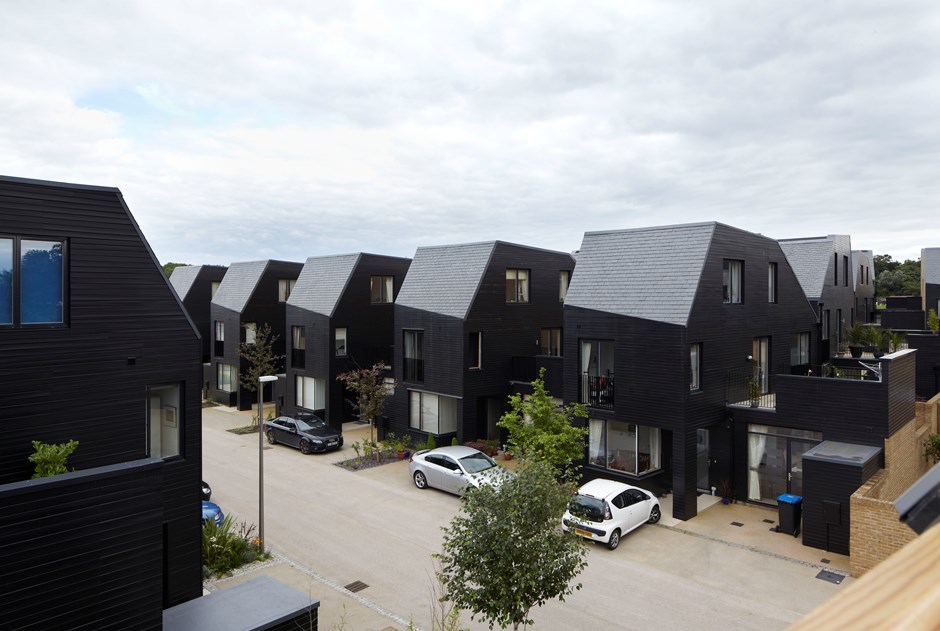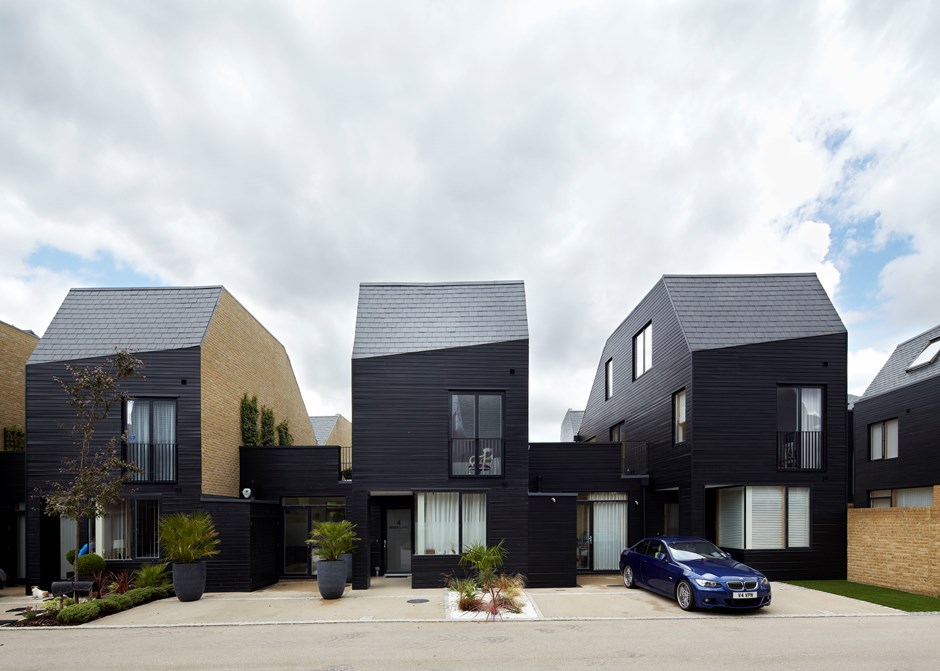Applying the EDG in practice: Exemplar Design
Newhall Be Case Study
Development name: Newhall Be
Location: Harlow, Essex
Size: 1.62 Hectares
Architect: Allison Brooks
Developer: Linden Homes
Accommodation type: 84 2&3 bedroom homes
Newhall Be is an 84-unit scheme for Linden Homes which completes the award-winning South Chase of Phase 1 of Newhall development in Harlow, Essex. When complete the Newhall scheme will comprise over 2,500 homes and two school sites, employment space and a district centre, embracing the balanced community principles outlined in the EDG. Newhall Farm was earmarked as a neighbourhood of the Harlow New Town in Sir Fredrick Gibberd’s original plans, however never made it into the final town plan. As the population of Harlow grew in the 1990s the District Council revisited the location, working with architectural and urban planning firm Rogers Evans Associates Limited (REAL) to develop the scheme.
The development encapsulates the mantra of the 2018 EDG, using design codes and a ‘form-based’ approach to set out requirements for streets, public spaces, building lines and heights, but stopping short of being prescriptive about architectural detail. Newhall Be, as with the EDG, used this to encourage innovation that is representative of the context, limiting the pastiche development that previous versions of the EDG tempted designers to deliver.
At Newhall Be this approach is effective in integrating a mix of new and familiar house typologies including apartments, terraced homes and courtyard homes. Buildings have been inspired by the traditional materials of Essex rural buildings and paired with modern architectural form create striking black-timbered structures that align to the traditional Essex barns across the landscape. Through a highly efficient masterplan the development delivers a layout which maximizes living space and flexibility for individual homes as well as bringing light into potentially dark terraced courtyards. The use of roof terraces ensures residents are able to access outdoor space.
In 2013 Newhall Be was shortlisted for the prestigious RIBA Stirling prize. This is what the judges had to say:
“Newhall Be demonstrates the added value that good architects can bring to the thorny problem of housing people outside our major cities. By halving the size of the gardens – creating roof terraces in total equalling the land ‘lost’ – the architects fitted an extra eight houses on to the development. This paid for extras such as full-height windows, dedicated studies and convertible roof spaces.
The overall scheme raises the bar for suburban housing so that, if emulated, could and should have a significant impact on development across the country.
This is a fine achievement in its own right. In the context of much of the UK’s new house building it is truly exceptional.”
From the perspective of the EDG, Newhall Be demonstrates what is achievable when the principles of quality design are embedded throughout a scheme. Specifically, the development exemplifies a number of the principles of the EDG including:
- Being highly sustainable with consideration for long-term energy use and incorporating measures to reduce energy use in properties
- Incorporating flexibility; all dwellings are built to Lifetime Homes Standards now replaced by Building Regulations Part M4 Category 2 (Accessible and Adaptable Dwellings), loft spaces can either be fitted as bedrooms or further workspaces
- Giving consideration to changing economies and home working; villas and courtyard houses include an office with some properties also having higher ground floors facilitating the later conversion to other uses
- Considering permeability in the layout through a consistent use of block structure, making the street pattern legible with the use of shared spaces away from the main route further enhancing the permeability
- Access to green space considered through provision of room terraces and creating linkages to parkland surroundings of the existing Harlow New Town
- Responding to the challenge of non-adoptable green infrastructure through the establishment of a residents’ association to oversee its management.
As with all case studies within the 2018 EDG, it is these design principles rather than the architecture at Newhall Be which serve as exemplars for other new development in Essex.
Page updated: 25/04/2023

